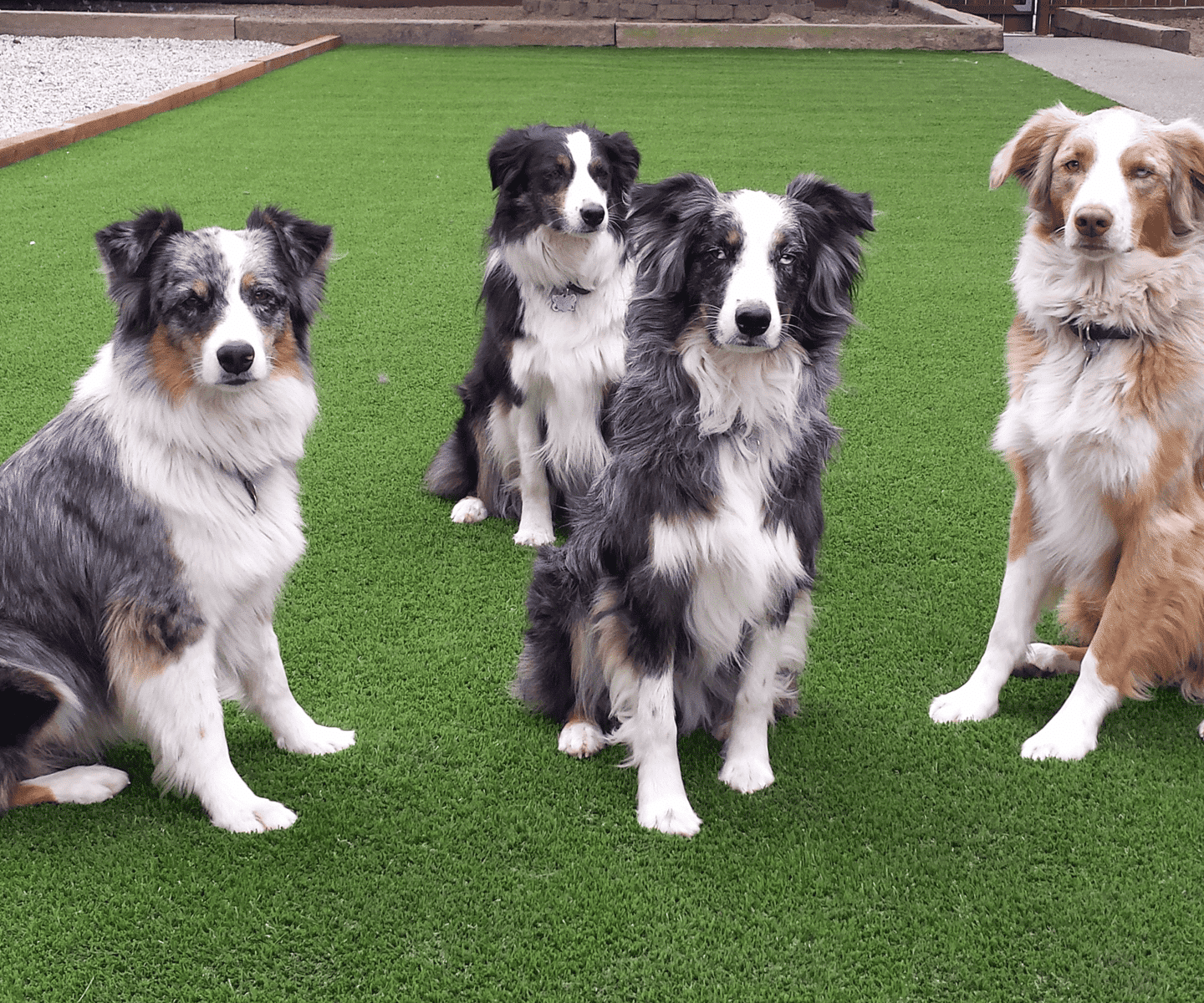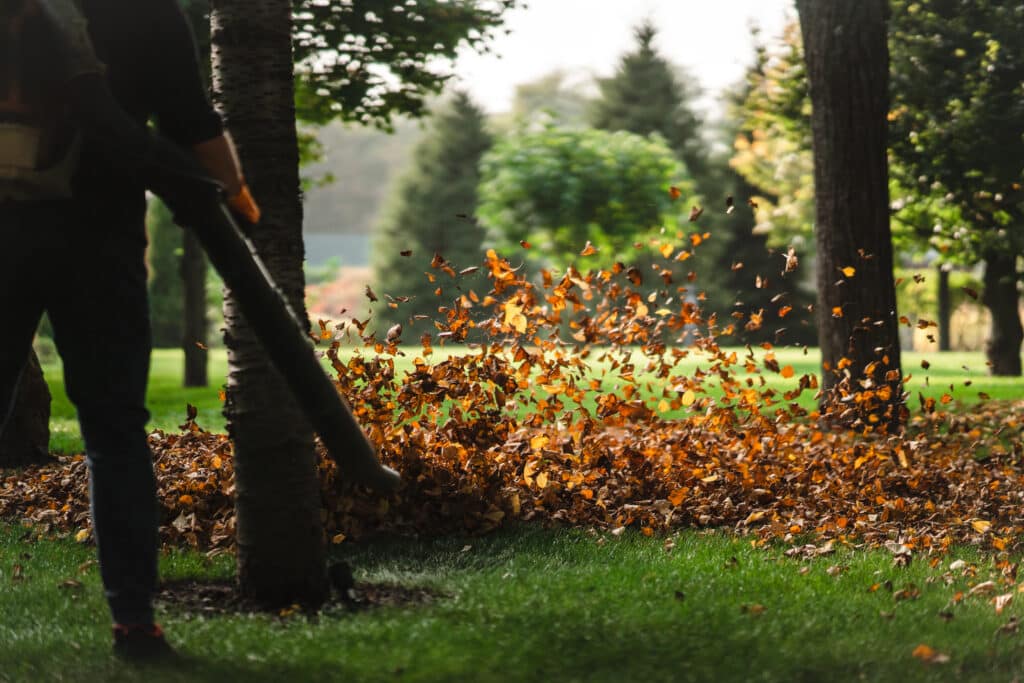Call us at 855-464-8873 or Schedule a Consultation
Artificial turf is increasingly becoming popular among dog owners for various reasons. Unlike natural grass, synthetic turf maintains a lush appearance without patchy spots, making it more convenient for dog owners. This means no more unsightly brown patches or muddy messes to clean up when your dog decides to have a digging spree.
One of the standout benefits of artificial grass is the reduction of odors and a mud-free environment. With synthetic turf, dealing with a muddy backyard after a rainy day is a thing of the past. Our dogs can play to their heart’s content without tracking dirt and mud into the house.
Due to its practicality and durability, many dog parks and daycare centers opt for artificial turf instead of traditional lawns. This trend highlights how artificial turf can handle heavy use and stay in great shape, making it ideal for spaces frequented by multiple dogs.
Artificial grass is safe for dogs to pee on. One of the significant advantages is that turf doesn’t require harmful fertilizers and herbicides, which means no exposure to potentially dangerous chemicals for your pets. This reassures pet owners who are concerned about toxins found in natural grass.
Our synthetic turf is designed to be non-toxic and safe for pets, preventing any potential harm from ingestion. Additionally, artificial grass reduces exposure to allergens and other harmful substances commonly found in natural grass. This makes it a healthier option for dogs with allergies or sensitive skin.
Modern artificial lawns have permeable backing and efficient drainage systems that manage dog urine without causing puddles. This ensures that your dog can relieve themselves without any harmful effects, and the turf remains clean and odor-free with proper maintenance.

Artificial grass does not wither or die from dog urine, which makes it a durable option for pet owners. However, dog urine does release ammonia, which can cause odors over time, especially with frequent use. The interaction between dog urine and synthetic grass can lead to foul smells due to the presence of urea.
Proper installation and drainage are key factors in allowing dog urine to flow through and not accumulate beneath the turf. Installing a membrane under the artificial grass can trap urine and lead to odor problems. Therefore, ensuring adequate drainage will help you prevent these issues.
Artificial grass maintains its appearance and does not discolor from dog urine. Thus, it is a reliable and aesthetically pleasing choice for dog owners who want a beautiful lawn without the maintenance hassles of natural grass.
Keeping artificial turf clean and odor-free requires regular attention. Regular cleaning and sanitizing are necessary to prevent odor from dog urine, keeping your synthetic yard fresh and visually appealing. Unlike natural grass, where dog urine can cause unsightly patches, artificial turf remains green and lush when adequately maintained.
Cleaning pet waste from artificial grass is simpler compared to real grass. The synthetic fibers don’t absorb urine, and you can keep your artificial lawn in top shape with the proper cleaning routine. Regular cleaning is necessary to prevent odors from accumulating in synthetic grass.
When your dog goes to the bathroom, you should act quickly. To prevent issues down the road, remove any solid waste immediately using a bag. After your dog urinates, follow quick cleaning steps to address the problem. For stubborn dog pee odor, mix equal parts water and vinegar, spray the area, and let it dry.
Small areas and multiple dogs might require daily cleaning to prevent odors. Heavy-duty broad-spectrum disinfectants can neutralize urine odors. After using a cleaning solution to remove residues, could you thoroughly rinse the area with water?
Use baking soda as a deodorizer by sprinkling it on the turf and letting it sit for 20 minutes before removal. Regularly hosing the area with water also helps control odors from dog urine. A regular cleaning schedule is necessary to prevent odor issues, especially in areas utilized by multiple dogs.

Regular maintenance keeps artificial turf clean and odor-free, ensuring a healthy dog environment. To prevent odors, artificial turf should be rinsed at least once a week in hotter months and at other times. This routine helps wash away any lingering urine and debris.
A high-pressure hose effectively cleans artificial turf, and enzyme-based cleaners help manage odors. In addition to regular rinsing, it’s important to scoop up feces, deep clean with live enzymes biannually, and note that artificial grass allows for adequate drainage.
Consistent maintenance will keep your synthetic yard pleasant for you and your dog. By sticking to a cleaning routine, you can enjoy the benefits of artificial turf without worrying about unpleasant smells or hygiene issues.
Dog urine and feces left too long can cause odors on artificial turf. Pooling water in areas of synthetic grass can exacerbate odor issues. Using a vinegar solution and antimicrobial turf can help mitigate odors effectively. If you deep clean your pet turf regularly and check the infill, you can prevent it from smelling badly.
Enzyme-based cleaners can effectively neutralize dog urine odors and improve cleanliness. Select durable infill material to prevent odor issues on your artificial grass.
With proper maintenance, dog owners have reported no urine odors on their turf for several years.
These cleaners are designed to remove dog urine odors permanently. Enzyme cleaners also break down ammonia odors that can linger from dog urine.
An enzyme-based solution for deep cleaning artificial turf with an intense dog urine smell is recommended. You can apply enzyme cleaners by hooking them up to a hose and soaking the affected areas for a thorough cleaning. This method provides a cleaning solution that deeply penetrates the turf fibers, effectively neutralizing odors.

High-quality artificial grass can last 10 to 20 years, making it a durable choice for pet owners. Synthetic grass is engineered to endure heavy use and resist pet damage, ensuring a long-lasting surface.
Dogs can’t dig up artificial grass, and the surface can withstand pet wear and tear. Synthetic turf is a durable choice for dog owners because it can withstand the rigors of pet activity. This durability means less worry about lawn repairs and more time enjoying a beautiful yard with your pets.
Artificial turf is generally safer for pets because it does not require harmful fertilizers or pesticides. Dogs have a lower risk of injury on synthetic grass because it lacks hazards like rocks and sticks.
Synthetic grass provides a clean play area for dogs. It also prevents mud and dirt from entering the home and creates a cleaner environment for pets and owners.
Even in wet conditions, artificial grass remains mud-free, keeping dogs cleaner. Synthetic turf can create a year-round green space without the hassles associated with natural grass.
Artificial turf requires less maintenance than natural grass, making it an attractive option for dog owners. It doesn’t need watering, mowing, or pesticides, significantly lowering maintenance efforts. This translates to time and cost savings for pet owners.
Artificial turf reduces the need for chemical treatments often required for natural grass. This is better for the environment and safer for your pets, ensuring a healthy and sustainable play area.
Artificial turf provides a clean, mud-free environment for dogs to play in. It eliminates mud and dirt patches, keeping pets and homes cleaner. This is a significant advantage, especially when natural grass becomes muddy during rainy seasons.
Artificial turf maintains a dry surface, allowing dogs to play without getting muddy. This mud-free environment reduces the need for clean-up for dog owners.
In summary, artificial turf benefits dog owners in many ways, from safety and cleanliness to durability and low maintenance. It’s a practical solution that maintains its lush appearance and is safe for dogs to pee on without harm. To prevent odor buildup, it helps to develop a maintenance schedule and routine for proper cleaning. Use enzyme-based cleaners and appropriate infill to help manage any potential smell issues.
Artificial turf is a long-term investment that provides a beautiful, mud-free play area for your pets while reducing the maintenance efforts and costs associated with natural grass. By considering the factors discussed in this guide, dog owners can make an informed decision about installing artificial turf and enjoy a cleaner, more convenient yard for their beloved pets.
Contact ProGreen today to restore your lawn to perfection after the storm.